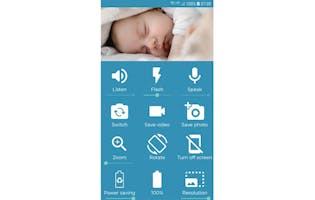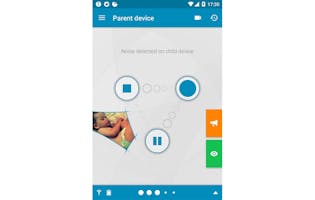Are products marketed for kids worth the extra expense?
We ask the experts.

A trip to the supermarket is expensive enough, but if you’ve got a baby or toddler in your house, it’s easy to be bewildered by the“baby” or “child” version of everyday items.
Toothpaste
In the toothpaste aisle, you’ll find toothpaste for a range of ages – from baby ‘milk’ teeth to products for kids older than six-years-old. These mini-sized tubes covered in cartoons with flavours like ‘berry bubblicious’ and ‘natural fruit’ seem like a great incentive to get kids brushing. But are they necessary?

New Zealand Dental Association (NZDA) spokesperson dentist Dr Rob Beaglehole said the most important thing to consider in your child’s toothpaste is the fluoride content, and how much you use.
“Toothpastes of at least 1000 parts per million fluoride are recommended for all ages and should be used twice daily. A smear is enough for children up to and including five years old and a pea-sized amount for children six years and older. It’s also important to encourage children to spit out leftover toothpaste after brushing.”
To ensure the toothpaste you buy has enough fluoride, look for packaging labels that say “contains the equivalent of 1000ppm fluoride”, “contains 0.221% sodium fluoride” or “contains 0.76% sodium monofluorophosphate”.
Dr Beaglehole said toothpastes marketed as natural are also OK if they have enough fluoride. “The NZDA doesn’t support fluoride-free toothpaste. There’s no convincing evidence that excess fluoride may cause fluorosis – a condition where the teeth’s enamel surface appears mottled. About 50% of children have tooth decay by the age of five and this will increase if people use fluoride-free toothpaste for their children.”
When it comes to toothbrushes, Dr Beaglehole said children should use a toothbrush with a small head and ultra-soft or soft bristles that don’t irritate the gums.
Skincare
From baby soap to baby moisturiser, there’s a swag of products claiming to nourish, soothe and moisturise your baby’s skin. But when it comes to baby and toddler skin, dermatologist Harriet Kennedy recommends a “less is more” approach.
“For most young children water alone is sufficient for washing. A mild soap-free and fragrance-free cleanser can be used if the skin is visibly dirty, but products with antiseptics and exfoliants should be avoided.” Dr Kennedy said.

It’s the same for moisturisers – they aren’t usually needed as most skin dryness will clear up on its own. Dr Kennedy said the exception for using a moisturiser is for children with eczema or where there’s a strong family history of eczema. Products should have few ingredients and be fragrance-free.
“Be aware of products making ‘natural’ claims. Most are not suitable for babies as the fragrances are derived from plants. Plant and botanical ingredients are common allergens and skin irritants and children are particularly at risk.”
Dr Kennedy advised bubble bath and talcum powder should also be avoided. “Bubble bath can dry out the skin and talcum powder can be inhaled and cause breathing difficulties.”
What about baby shampoo? Generally, shampoo isn’t needed for babies. Scalps produce very little oil until puberty, so it’s not necessary to wash children’s hair often. Baby-specific shampoos tend to be fragrance-free and have milder, lower foaming formulas that are designed not to sting the eyes.
Don’t be swayed by ‘dermatologically tested’ or ‘dermatologically certified’ claims. Dermatologist Louise Reiche said there are no standard definitions for these terms.
“Dermatologically tested means the product has undergone irritancy and allergy testing by dermatologists on real people. However, it doesn’t mean the product achieved good results. Dermatologically certified may have different meanings in different countries,” says Dr Reiche.
Common allergens or irritants that should be avoided in skincare products for children;
- fragrances (including natural/plant-derived)
- essential oils
- sodium laurel sulphate (SLS)
- propylene glycol
- methylisothiazolinone
- antiseptics (chlorhexidine, benzalkonium chloride – also found in laundry products)
- foaming agents (cocamidopropyl betain)
- exfoliants
- retinol
- vitamin C
Sunscreen
Sunscreens specially formulated for children have a mild base for sensitive skin. But there’s no reason why kids shouldn’t use the family sunscreen if it doesn’t irritate their skin. Test a small amount on the inside of their forearm for a few days to check if skin reacts.

Babies younger than six months shouldn’t have sunscreen applied, unless they can’t be protected by shade and clothing. Infants have a thin, less developed skin barrier and are more likely to be irritated by ingredients.
The New Zealand Dermatological Society recommends physical sunscreens for infants – those that sit on top of the skin and create a physical barrier to harmful UVA and UVB rays – such as zinc oxide or titanium dioxide for children. They don’t irritate, they provide excellent broad-spectrum protection and they aren’t absorbed into the body. Physical sunscreens aren’t always labelled as children’s sunscreens; so you can go for whatever brand you prefer, whether it’s labelled for babies or children or not.
Toddler milk
Toddler (or junior) milk is powdered milk fortified with vitamins and minerals. It’s marketed for children one year or older as stage 3 and stage 4 formulas, and packaging is splashed with claims such as “zinc + vitamins A+C+D for normal immune system function”, “contains iodine and zinc to help support brain function”.
These claims make the milk sound like the perfect nutrition insurance policy to ensure junior gets off to a good start. But are they necessary?

Professor Anne-Louise Heath of the department of Human Nutrition at the University of Otago says for most children toddler milks aren’t necessary.
“Toddler milks can’t replace a healthy diet and should only be used as a temporary replacement to cow’s milk during a baby’s second year. Cow’s milk is very low in iron and toddlers love drinking it, so they can end up with low iron intakes and toddler milks address this. Toddler milk has also been shown to improve iodine and vitamin D status”, states Professor Heath.
There are also downsides to giving your child toddler milk. Toddler milks are much more expensive than cow’s milk and parents could instead be buying fruit, vegetables, lean meat (or alternatives such as beans) and dairy products instead to give their children a balanced diet. They also encourage toddlers to continue their reliance on milk rather than eating a wide variety of healthy foods.
There’s also concern that toddler milks have similar packaging to infant formula and are a sneaky way for companies to advertise their products in a restricted market. Formula for infants up to the age of six months (stage 1) isn’t allowed to be marketed but restrictions don’t cover stages 2, 3 and 4 milks.
An editorial published in The Lancet’s Breastfeeding 2023 Series stated that the cross-promotion of infant, follow-on, toddler and growing-up milks using the same branding and numbered progression – which aims to build brand loyalty – is a blatant attempt to circumvent legislation that prohibits the advertising of infant formula.
Professor Heath is also concerned about the numbered approach to branding, but believes there’s a solution.
“Toddler milk is a very different product to infant formula (which has to meet the complete nutritional needs of an infant aged up to 4-6 months), so it makes no sense for these milks to be marketed in sequence with infant formula. Toddler milks could be packaged in a sealed bag inside a cardboard box without the ‘stage number’. This would be consistent with other fortified milk products, such as Complan.”
Juice boxes
Perfect for popping in the lunchbox or when you are out and about; a juice box might seem like a healthy treat for your little one. But Professor Heath insists juice is a sugary drink so is best left on the shelf.

“Even if a drink has no added sugar, the natural fruit sugars can still wreak havoc on baby teeth. A toddler can also consume a lot more pieces of fruit in a drink than they could if they have to eat the whole piece of fruit and they aren’t getting the fibre either,” says Professor Heath.
The Ministry of Health recommends it’s best to offer water or milk. Sugary drinks such as cordials, fruit drinks and juices, flavoured milks and soft drinks should not be offered to babies and young children as they can damage a child’s developing teeth.
Despite this advice, the latest Growing Up in New Zealand study of child development found 23% of babies drank a fruit juice (including watered-down juice) at least weekly at nine months old.
Toddler snacks
A hungry toddler is a hangry one, so a pre-packaged snack can be a lifesaver when you’re out and about. There’s no shortage of toddler snacks on shop shelves to fill the gap, but some are not as healthy as they claim.

Rafferty’s Garden Apple & Raspberry Snack Bars claim to be ‘made with real fruit’. But the fruit is in the form of a paste made up of ingredients such as fruit puree concentrate, sugar and glucose.
Dr Leanne Young, public health dietitian and member of Health Coalition Aotearoa’s Food Policy Panel, said fruit puree concentrates bear little resemblance to the whole fruit it’s derived from – and its sticky nature is bad news for little teeth.
“Another issue is that when children regularly eat sugary foods, they develop a preference for sweet foods which makes it challenging to introduce healthier, less processed, unsweetened foods,” said Dr Young.
Other products marketed for toddlers claim to support their development. Kiddylicious Veggie Straws claim to encourage self-feeding and are marketed as “ideal finger food”. But these ultra-processed snacks deliver little in the nutrition department.

Don’t be fooled by the images of veges on the packaging either. The onion, tomato and beetroot it contains are in the form of a powder and only make up 1.2% of the product in total, resulting in a product of low nutritional value that bears little resemblance to fresh vegetables.
Despite their convenience, Dr Young said there’s no need to buy expensive pre-packaged snacks for toddlers. Whole foods that are easy to prepare and portable in a reusable container, including fresh fruit and vegetable pieces, cheese cubes and wholemeal toast fingers, are much better for children and lighter on your wallet.
“Make sure the foods offered are appropriate for a child’s stage of development to reduce the risk of choking. Always supervise babies and young children while they are eating and teach them not to play or run around while eating,” said Dr Young.
We've tested 22 baby monitors.
Find the right one for you.
Arjona Software

D-Link

Dormi

Member comments
Get access to comment